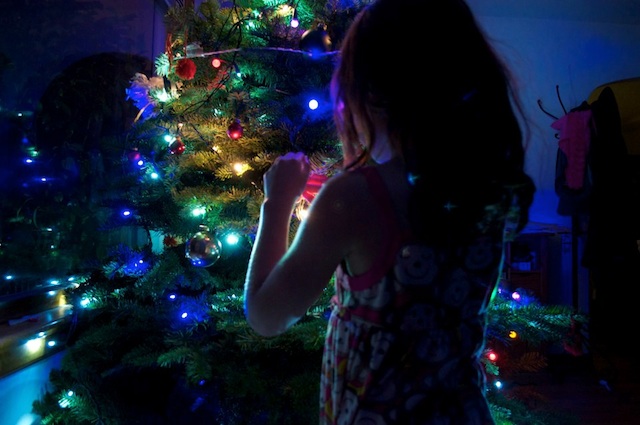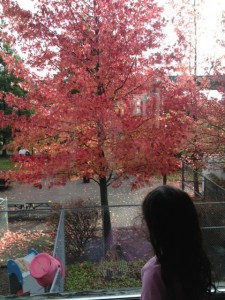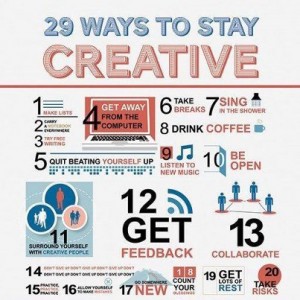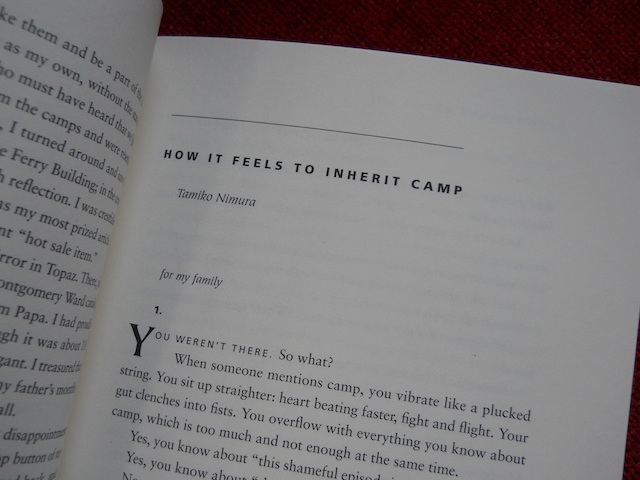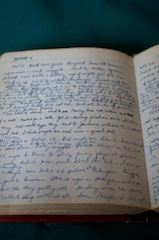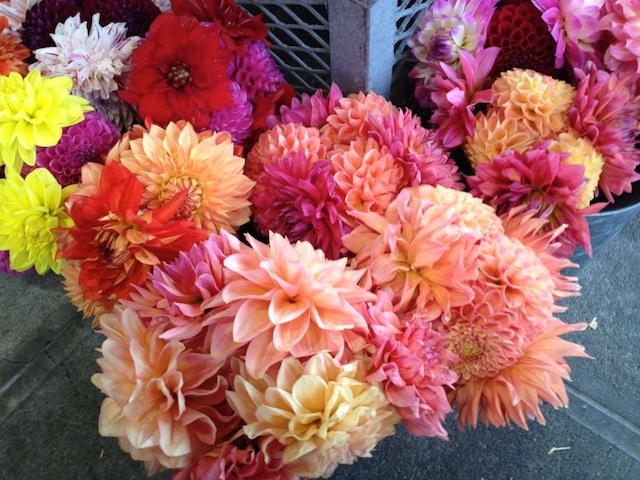
Fall has always been the season of transitions to me, more than any other season.
(Sorry, spring: I love your flowers, but I have terrible allergies.)
Maybe it’s because when I was teaching, I always felt the pull of the old and the new each autumn: brand-new school supplies and clothes shopping; older, deeper colors of the leaves on the trees; colder and cloudier weather; new faces to learn and new students to teach. Fall was always the place to take on something new and gracefully let go of something old.
This fall, though, Josh has a new job. It’s a big transition for all of us. He’s been at UW for over 10 years, including the years of his doctorate. He’s now working in downtown Seattle. We’re all excited. But we’re also waking up about half an hour earlier. The girls like to take him to the bus stop in downtown Tacoma. So we’re all out the door in various stages of readiness by 7:05AM. The girls are sometimes yawning, and they’ll bring their bedtime snuggles or lap blankets in the car. Josh also comes back later in the evenings. We miss him, but it’s a huge relief to have him working happily at a place where he has (among other wonderful things) a window with lots of natural light. I can’t wait to visit him and go out for lunch. It’s close to PIke Place Market.
As for me, I’ve been trying out new household routines: ways to keep things a bit cleaner so we can welcome more people more frequently to our house. I’ve added one task a day to my everyday housecleaning, which is mostly kitchen-cleaning (doing the dishes, emptying the dishwasher). I’ve been trying a new way to plan meals, where each of us gets to pick a meal that all of us will eat (or at least try) each week. I’ve gone off the foodie deep end: for breakfast, I’ve been making homemade granola bars for Josh to grab in the mornings. I’ve been trying to incorporate more exercise into my week again: more frequent yoga classes, longer walks/runs.
Of course, not all of these new routines and resolutions are working smoothly all of the time. What’s most important, though, is that I am slowly learning to be very nice to myself in the middle of all this change. The girls eat mac and cheese twice in one week? That’s okay. I didn’t get to my daily cleaning chore? Oh, well. Tack it onto the weekend. I’m learning to shrug and keep trying the next day. Or the next week. I’ve wasted far too much energy beating myself up for not meeting my own ridiculously high expectations. Really. Who needs it?
And the book—I am beginning to understand why authors are cagey when they’re asked, “How’s the book going?” Because my answer is that I don’t know, exactly. It makes me sound lazy, or decadent, or indecisive, the quintessential directionless artist. Before I started writing this book, I wanted to think that it was such a linear project: “Well, I’ve gotten half of the book done, and I have an outline, and I just need to write two more chapters and I’ll be done.” It would be so nice to have a clear, concrete status report. I can say that I’m writing pieces, and thinking about where they might fit in the book. I’ve been getting to some important pieces, and in the last couple of weeks I’ve written some things that will scare the crap out of me if they ever get published. They feel scary, and therapeutic, and necessary. I’ve thought too much about how these pieces will be published, and where. I’ve worried that the book is too much about me, and less about my dad. And I’ve thought about how much I like being published in an age of near-instantaneous publishing, and how it can be a heady sensation to want those “likes” and retweets and page views in response to something I’ve written. I don’t want to be addicted to that form of publishing, right? There has to be another reason why I write.
Right now the book feels like an archaeological dig: there’s something! I think it’s important! There are bones! I don’t know what it is yet. I need to find the right tools to brush away the dust and debris. It’s taking shape. And I’ve been thinking very hard about something author Cheryl Strayed said a few weeks ago, as quoted by my friend Christine—“to lean hard into the work and not anxiety.” So I’m going to keep leaning, keep writing.
Fall in the Northwest has taught me that when the days turn gray, we just look harder for spots of bright color.
Fancy Autumn Meal for Josh: Polenta fries, Balsamic-glazed mushrooms, Garlicky Swiss chard
It’s been a while since I did a recipe post, and this one’s going to be short on pictures, unfortunately. But I posted this meal as my Facebook status update, and a few people asked for the recipes.
We had a superb time with the polenta and the mushrooms, and chard on the side. But you could mix them all together. You could add some goat cheese on top of the polenta. You could grate some Asiago or fresh Parmesan on top. You could add fresh cracked black pepper. But these 3 things together were just fine, all by themselves.
I had some versions of this meal wandering around in my head, as I was shopping at the farmers market. Mushrooms? Yes. (I’m a late convert, and I still don’t like them raw or on pizzas, but sauteed or stuffed, yes.) Chard? Always. And polenta…definitely. Since the weather had turned ventolin inhaler no prescription chilly, I’d been hungry for polenta. I made the polenta the night before, and fried the polenta the next night, Monday. It was a super-busy day, with school, C at ballet and then M with swimming right afterwards. Last Monday, because of bus schedules and swim lessons, we couldn’t pick Josh up downtown. I grabbed a few bites of the polenta and mushrooms before we headed out the door. But when he came home, he found different pieces of the meal simmering on the stove, with a lovely bouquet of smells to greet him when he walked in the door. We ate more together when I got home with the girls. That made me happy. I think we’re all going to like it here.
Part 1: Polenta Fries/Grit Cakes, adapted slightly from Matthew Amster-Burton’s Hungry Monkey
I used to be intimidated about cooking polenta, but not any more. Many recipes call for frequent stirring, stirring occasionally, and so on….for 45 minutes! But I found this recipe in Matthew Amster-Burton’s great book Hungry Monkey. If you have a kid (and even if you don’t), Matthew’s book is a fun read, but it’s also got some yummy recipes that I’ve tried and liked. I’ve been (and probably still am) a picky eater and I have liked so many recipes and ideas from this book.
The hardest part about this recipe is remembering to make the polenta and chill it overnight first before frying it the next day. Really. It’s pretty easy.
1 1/2 cup grits or polenta, preferably stone-ground (I use Bob’s Red Mill polenta)
1 1/2 cups whole milk (our family’s lactose-sensitive, so I used soy milk—see more details below)*
4 1/2 cups water*
2 teaspoons kosher salt
2 tablespoons unsalted butter, divided
*Because soy milk is thinner than whole milk, I used less water and more soy milk. I reversed the proportions of water and soy milk, so 4 1/2 cups soy milk, 1 1/2 cups water. Cooking the polenta in more milk rather than just water helps to make it, well, creamy. And more flavorful.
- Preheat the oven to 350 degrees F.
- Combine the polenta, milk, water, salt, and 1 tablespoon butter in a large saucepan. I used our cast-iron skillet, which works well, but then I have to clean it out in order to fry the polenta the next day.
- Place in the oven and bake 1 hour. Stir after the hour.
- Place the pan back in the oven and bake another 15 minutes until the polenta is thick and creamy. Add the additional 1 teaspoon butter and stir well.
- After the cooked polenta cools down, place it into a loaf pan (or even an 8”x8” pan) and refrigerate it overnight.
- When you are ready to cook the polenta fries, cut the polenta loaf into half-inch slices, or batons for fries.
- Using a nonstick or cast-iron skillet, fry the slices in butter (or butter plus olive oil) over medium-high heat until well-browned and crispy on both sides. You don’t need very much butter—just enough for a small coating of the bottom of the pan. Don’t touch the slices for the first 5 minutes, but each side can take up to 10 minutes to brown.
Part 2: Balsamic-glazed mushrooms
You might be tempted to add oil or butter before you do this, but don’t. Trust me. You want the mushrooms to release their liquid first and let that evaporate, then add the other flavors so that the mushrooms will absorb those instead of repelling them with water. I think I adapted this recipe from the Cha Cha Cha cookbook (Cook, Eat, Cha Cha Cha).
1 lb. mushrooms (oyster or cremini or portobello would be good), lightly rinsed and sliced about 1/3” thick
2-3 cloves fresh garlic, minced
1-2 tbsp butter
Balsamic vinegar, about 1/8 cup or a generous glug
About 1 tsp brown sugar, to taste
Fresh cracked black pepper or red pepper flakes, or both, to taste
- Place a cast-iron or large regular skillet over medium-high heat. Once the pan is hot enough for a few drops of water to dance across the surface, add the mushrooms.
- Cook the mushrooms, stirring occasionally when they start to brown. Wait for them to release their water, and cook away the water that emerges. Once the pan is mostly dry again, and the mushroom liquid has evaporated, add the butter and the minced garlic. Make sure the garlic doesn’t burn.
- Then, turn down the heat to medium and add the balsamic vinegar. (It will splatter if you don’t turn the heat down.) I don’t own very fancy balsamic, so I cook the vinegar, reduce it a bit and then add a touch of brown sugar.
- Add fresh cracked black pepper, if you want it, or some red pepper flakes.
Part 3: Garlicky Swiss chard, another recipe adapted from Matthew Amster-Burton’s Hungry Monkey
I just got used to liking spinach, fresh and in things. Started using kale in soups. I know kale’s the darling green of foodie and health folks these days. Started using chard in lasagnas, soups, other places where I used to use spinach. But chard and I are now BFFs. I buy a bunch at least once or twice a week and cook it this way. I Love Chard. Who knew? Thanks, Matthew.
1-2 bunches Swiss chard leaves (red, white, rainbow, whatever works for you) (reserve stems for another use)
1-2 tbsp olive oil
1-2 tbsp unsalted butter
Salt to taste, about 1/2 tsp to start
2 cloves garlic, minced
Pepper, if you want it
A splash of lemon juice
Heat the olive oil and butter in a skillet over medium-high heat. Add the salt and the chard leaves and stir until wilted. Add the minced garlic and stir. Cover, reduce heat to medium, and cook for about another minute. Add pepper, if you want it, and lemon juice.

